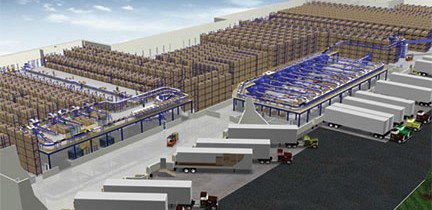E-commerce and the demand for omni-channel fulfillment
by Carol Miller, MHI VP of Marketing and Communications
E-commerce sales are growing 20% annually and are expected to reach $750 billion globally this year. This global shift toward e-commerce is changing how the retail and logistics industries operate.
This is the topic of a recently released Prologis research paper titled, “Inside the Global Supply Chain: E-commerce and a New Demand Model for Logistics Real Estate.”
The report details how e-commerce is changing retailers’ requirements for logistics real estate and how distribution centers are adapting. This trend is impacting all aspects of the retail industry, including the size, layout and strategic location of fulfillment centers. This growth in e-coimmerce is driving the transition of traditional distribution activities (to store) to fulfillment centers (direct to customer).
As e-commerce retailers seek to drive profitability, differentiate their offerings and improve time to market, logistics facilities are increasingly viewed as revenue drivers.
The report describes an arc of e-commerce fulfillment requirements for retailers who initially grow within existing distribution networks, then leverage multi-tenant facilities and 3PLs to scale and ultimately build dedicated omni-channel facilities.
“Online fulfillment is in its infancy and we anticipate e-commerce will create significant new demand for logistics real estate well into the future,” said Chris Caton, vice president and head, Prologis Research. “Our analysis indicates fulfillment models emphasize proximity to major population centers, allowing for faster delivery times, higher services levels, and greater flexibility in the supply chain.”
Click here to read the complete Prologis report.
The 2014 MHI Annual Industry Report contains more in-depth coverage of the omni-channel trend. Click here do download this report.





